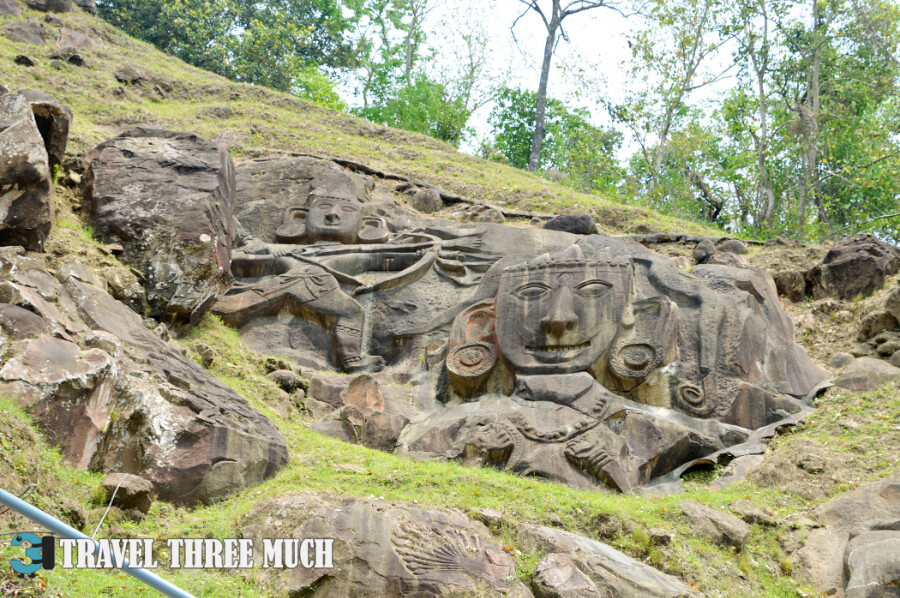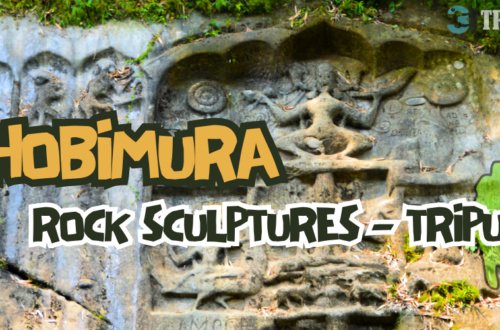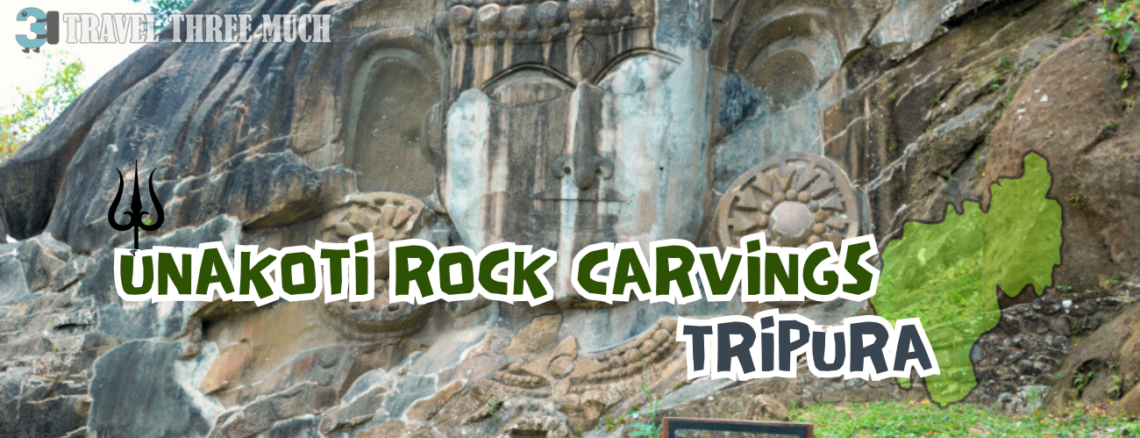
Unakoti – One Less Than a Crore Stories
The way to Unakoti
We had planned to visit the Unakoti rock carvings as the first destination in Tripura. The rock carvings are located about 180 km from Agartala, where we stayed. We started from Agartala at about 7 AM as we wanted to be back before sundown.
Once we left Agartala, there was a short stretch of state highways before the road rapidly ascended into a hilly section. The two-lane road gradually became a 4-lane well-paved highway but still traversed across the hills. The weather was overcast and the greenery in the hills made for some breathtaking views. Options for food stops on the way to Unakoti are extremely limited. So, consider bringing packed lunches and ample water. The last stretch of roads for a distance of about 10 km before Unakoti was work-in-progress and so our speed dropped.
Soon, we came to a halt, seeing a row of pots placed across the road blocking us from proceeding further. We understood that the local populace was protesting and wanted to draw the attention of the administration to some issue. The locals guided us to another route that took us on a slight detour around the protest, back on some more village roads. A signpost informed us to leave the highway and take a left turn to reach the rock carvings. A few stalls with light snacks and tender coconuts were the only options for food and drink.n
About Unakoti – The legend
There are at least two different legends as the origin stories for this complex of monumental reliefs.
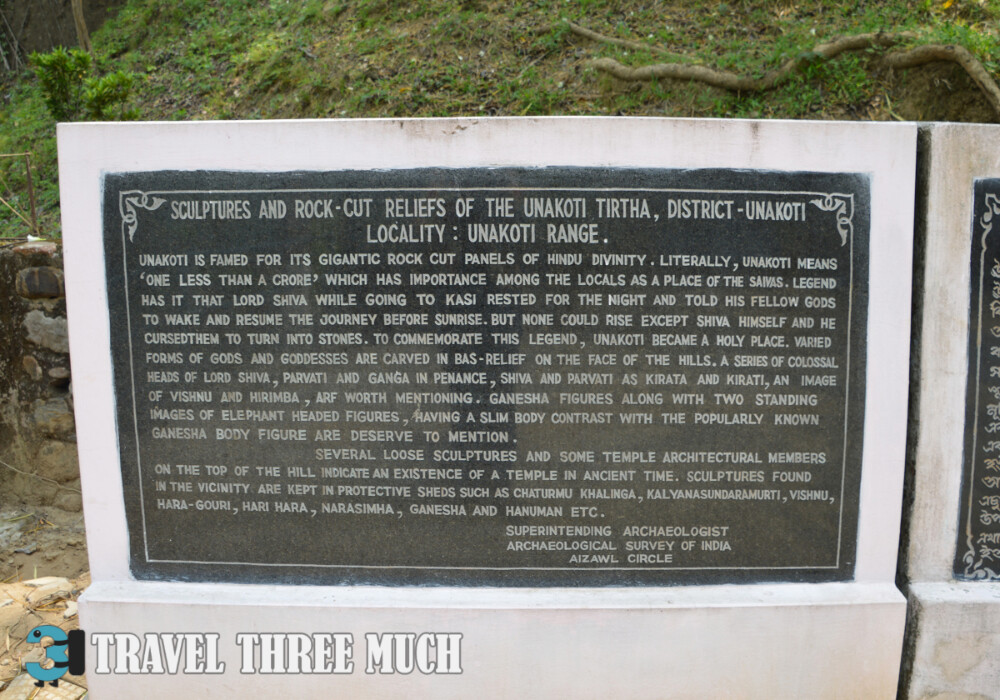
Termed by some as the ‘Angkor Wat of North East India’, in one of the stories, Shiva along with the other gods on the way to Varanasi, rested for the night here with instructions that the journey was to resume before sunrise.
When none of the other gods woke up at the appointed hour the next morning, Shiva cursed them all to turn to stones.
In another legend, Kallu Kumhar, an ardent devotee of Parvati wanted to accompany Shiva and the goddess to Mount Kailash. Shiva laid a condition that he could take Kallu along with them only if he finished making 1 crore (a word for 10 million, used in India) idols before sunrise.
However, the potter could only finish making one less than the 1 crore idols required to secure his position as a part of Shiva’s entourage and so, was left behind. This is also the reason for the place to be called Unakoti – one less than 1 crore.
The complex and its sculptures
Just past the parking is the entrance to the complex housing the hillsides with the carvings and sculptures. The entry itself was free but our bags were checked to make sure single use plastics, tobacco and the likes don’t get through. The area has been adopted by the Archaeological Survey Of India (ASI) and was well maintained.
Just past the first flight of stairs and a bend, you come face to face with a nearly two storey-tall head of Shiva carved on the side of a hillside. Shiva’s flowing dreadlocks are parted by a hint of a crescent moon.
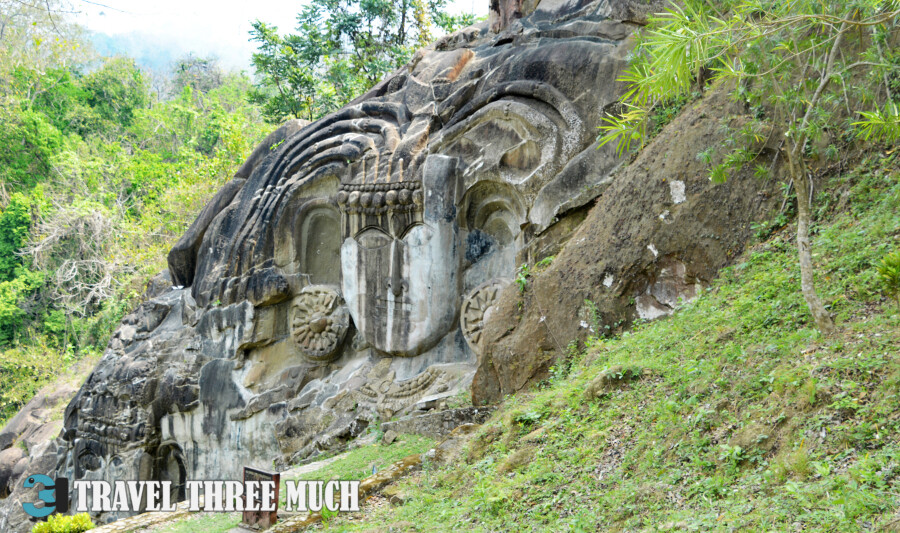
We see the moustachioed mouth with slightly parted lips showing the teeth inside, wheel-like earrings and the elaborate head-dress. The necklace carved with beads, each nearly the side of a closed fist, are all motifs that make repeated appearances in other carvings and sculptures throughout the complex.
There was a smaller relief a little way further, of a 4-armed Kalabhairava in a pose where he’s about to let an arrow loose from a drawn bow, with another arm brandishing what seems to be the remains of a trident.
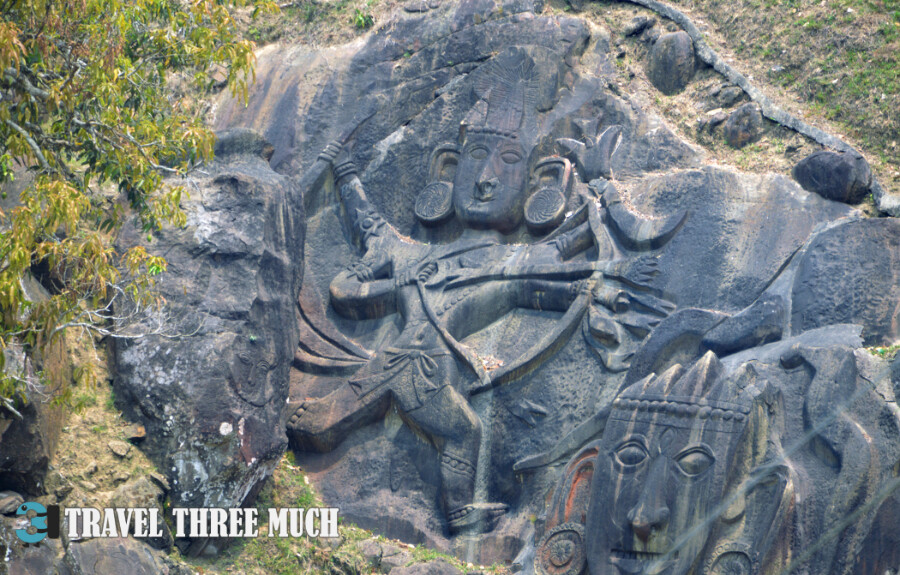
Another relief seemed to be a couple – Shiva in the hunter’s form or a ‘kirata’ and another of a goddess in the huntress’ form – a ‘kirati’.
Just to the right of these reliefs is the star attraction of the complex – a nearly three storey tall head of Shiva.
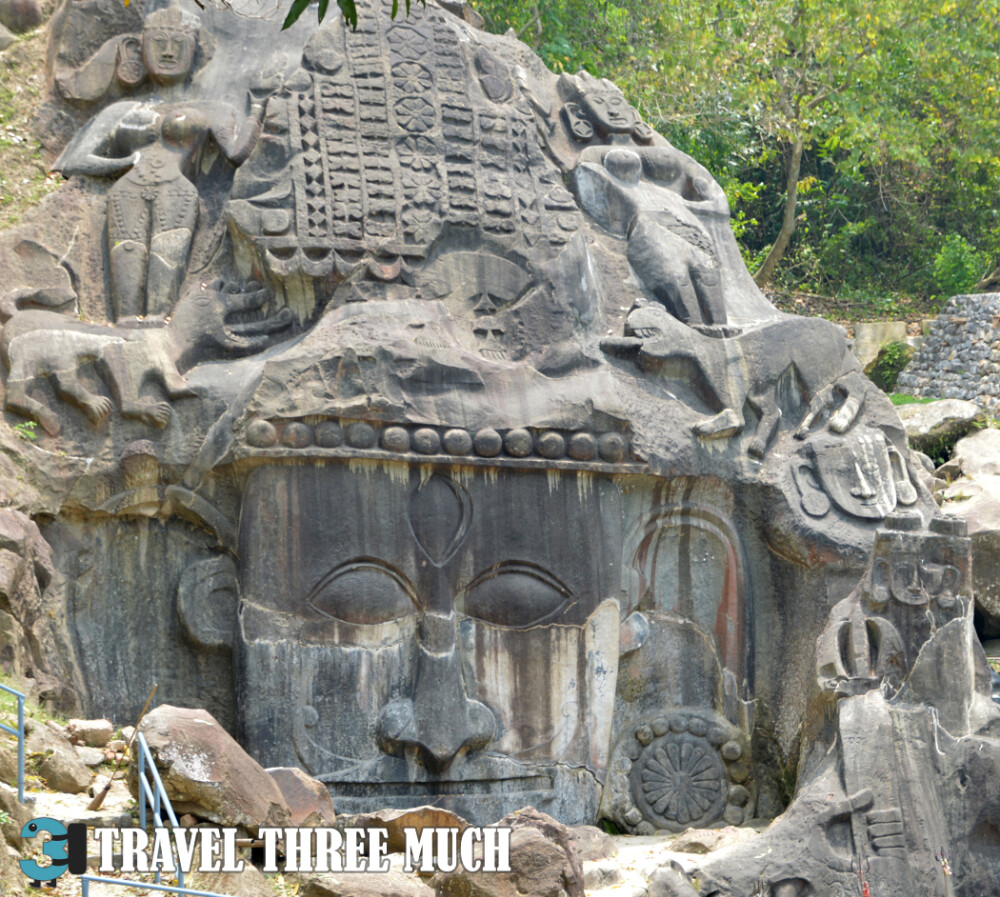
The mighty Siva has an elaborately carved head-dress which alone makes up more than one-third of the height.
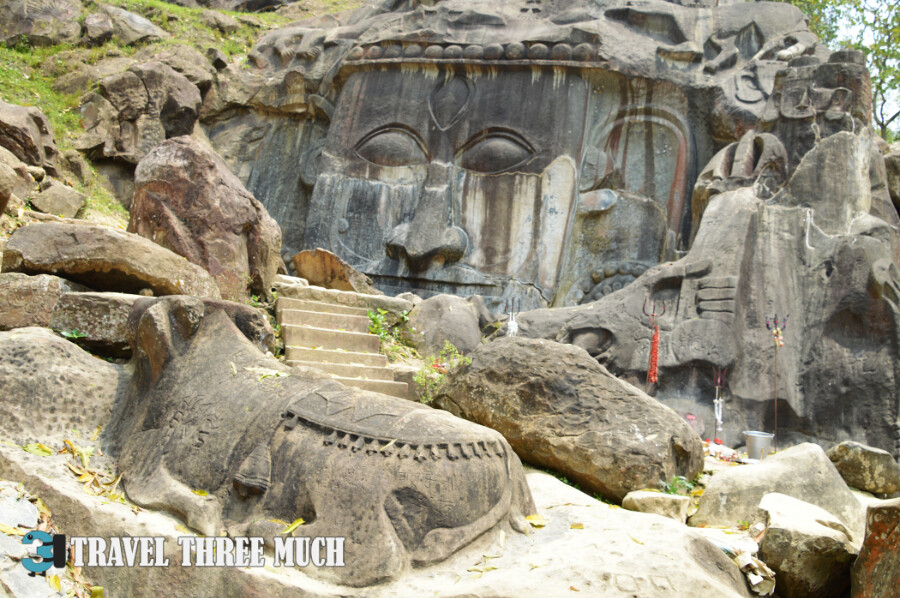
On either side of this head stand goddesses standing atop their roaring and snarling steeds.
This is possibly a Makara with Ganga on the left of the head and a lion/tiger with Parvati on the right side. At the foot of the towering head are half-buried in the terrain, at least three sculptures of Nandi. Nandi is the divine bull which is also Shiva’s steed.
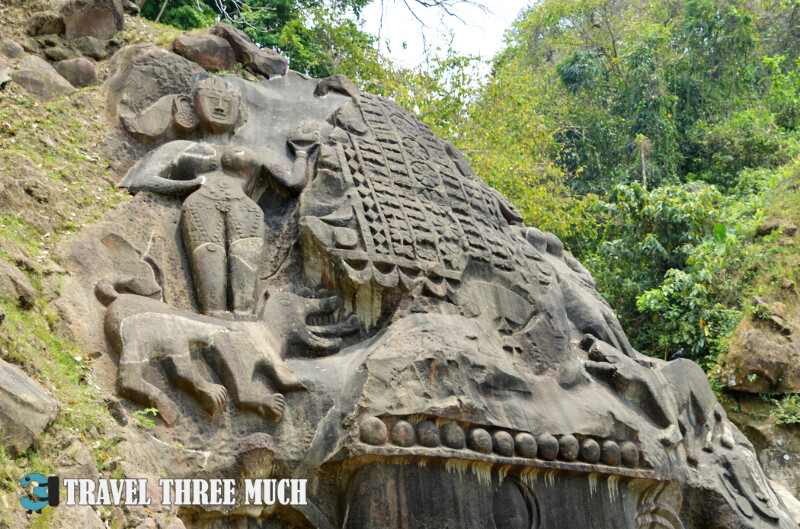
We moved on to the next group of carvings with some interesting features.
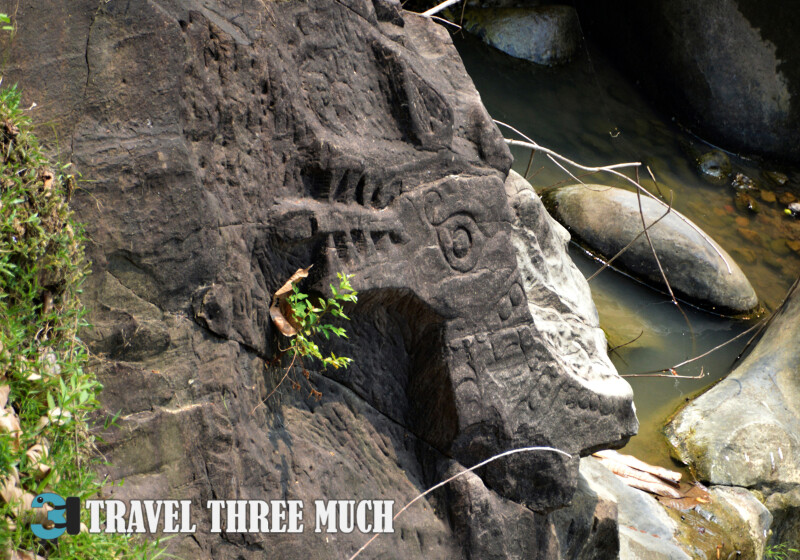
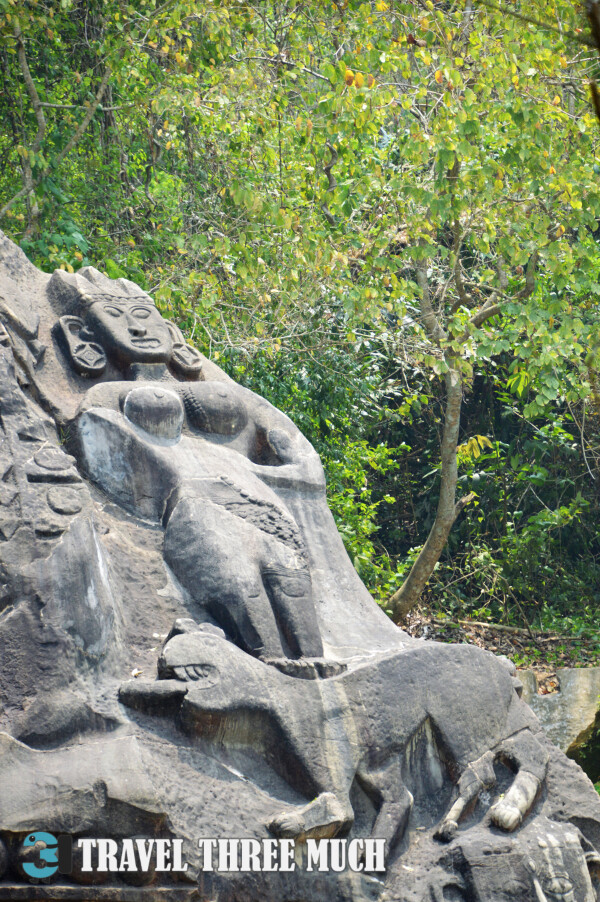
These were a standing Vishnu with a sword, mace, and discus.
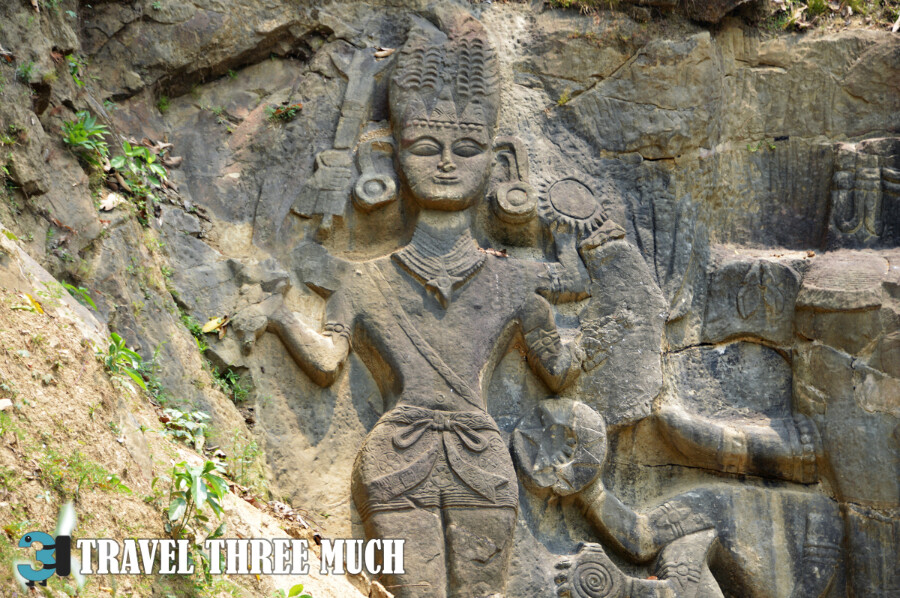
Next to the Vishnu are three elephant-headed Ganeshas each with 8 hands but sculpted with interesting deviations from conventional representations of the deity.
Two of the Ganeshas don’t have the generously proportioned belly popularly associated with the deity’s penchant for sweets. These two Ganeshas also have their prominent tusks sized realistically instead of the diminutive proportions seen in contemporary times. The third Ganesha has the pot-belly and near-invisible tusks associated with representations we see in the present day.

The variations position, size and shape of the eyes and noses are very interesting because they seem to be faithful to those of real elephants in the 2 Ganeshas with slim midriffs. However, the third Ganesha, remains faithful to the same rules as that of the Shiva heads seen elsewhere in the complex – humanoid eyes located at the top of the head (instead of on the sides) and located closer to the centerline of the face, parted by a block of relief probably denoting a ‘nose’ on the forehead!
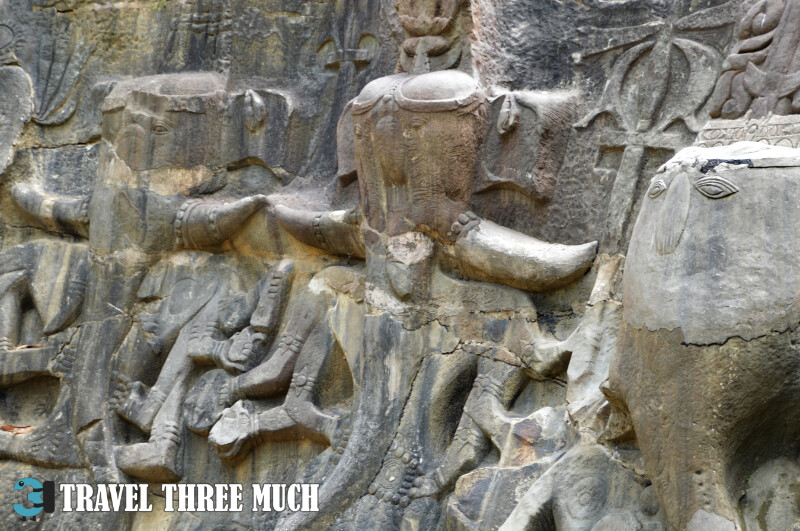
Just past these sculptures we came across a few Irrawaddy squirrels calling loudly to each other and scampering about on trees. It was the first time we saw this squirrel in real life and it took a while to be able to spot them!
As we walked along the steps, we were able to see many more sculptures depicting various deities and animals.
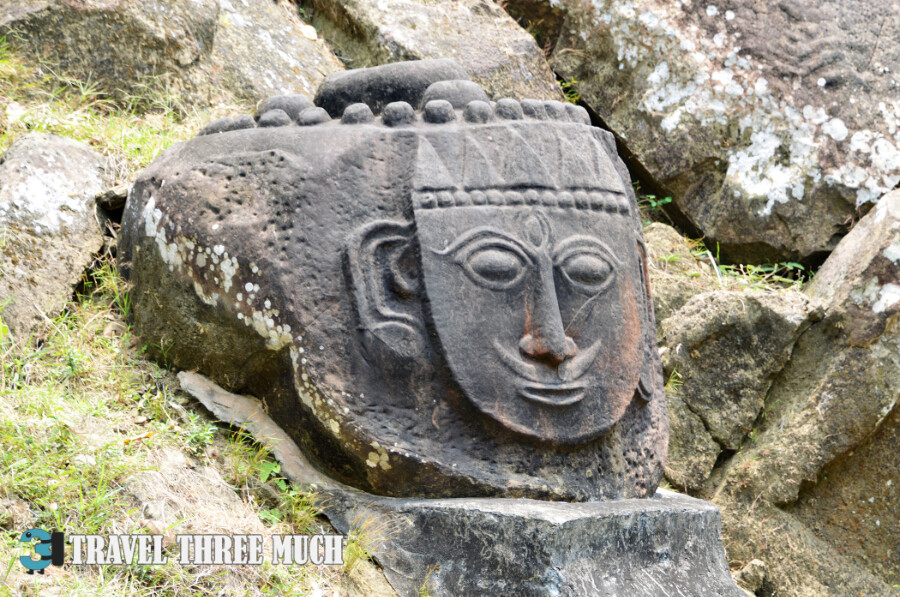
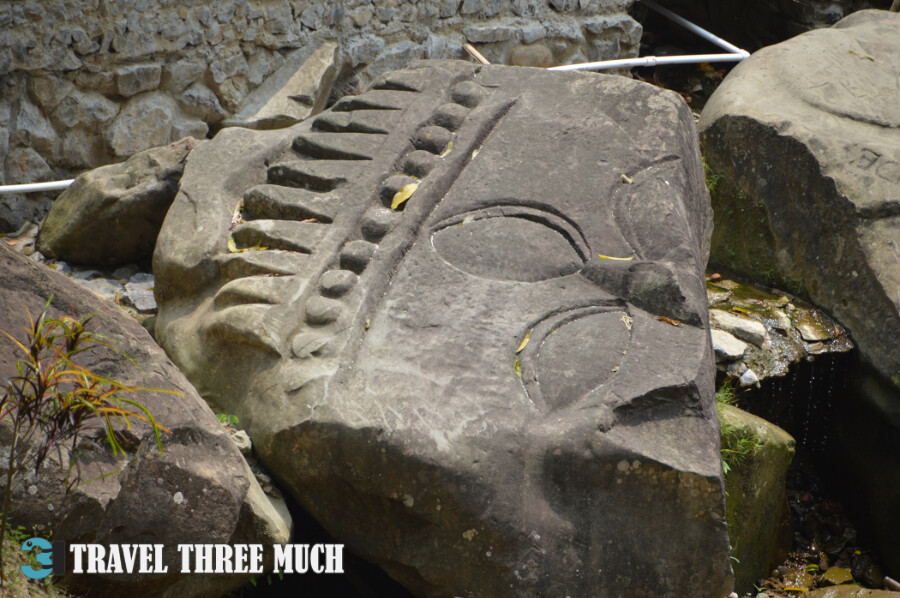
There was an example of a Chaturmukhalinga (a 4-faced abstract representation of Shiva) with priests still making offerings to the deity.
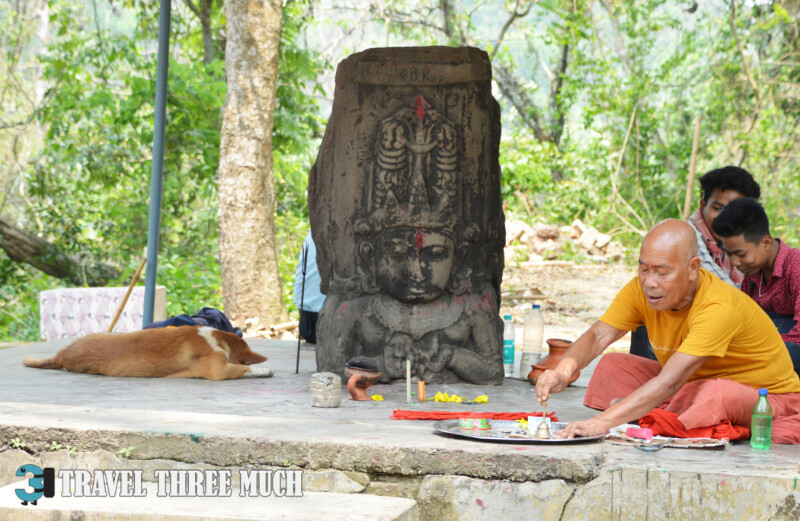
We also saw few other depictions with sharp features. There is something really surreal about being surrounded mountains with sculptures and we could really feel that!
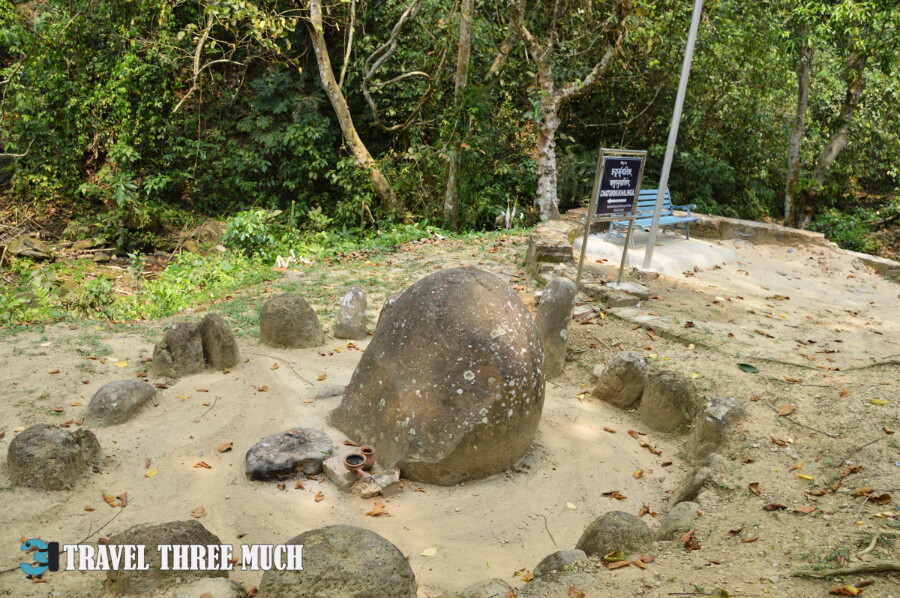
A steep but short trek to the top of the hill complex brings one to a room with windows protected by grillwork, where the sculptures recovered from the complex are kept to protect them from further deterioration by exposure to the elements and graffiti.
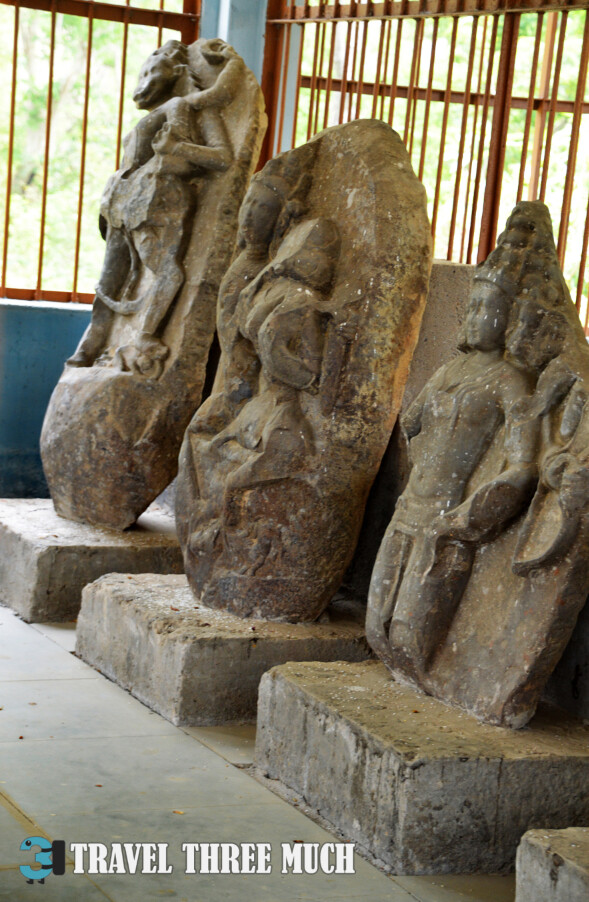
The room houses among others, a Hanuman, a Narasimha, a Ganesha and other forms of Shiva and Vishnu.
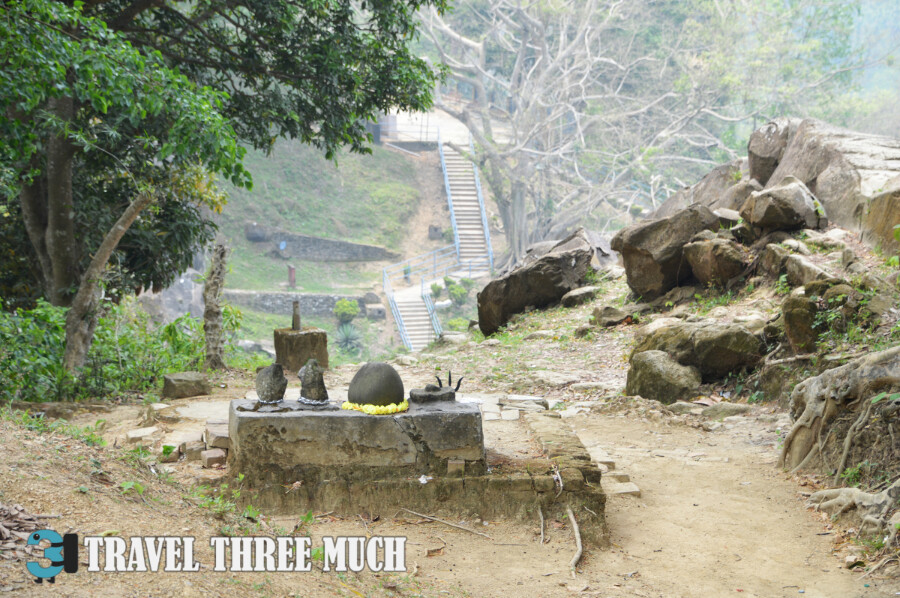
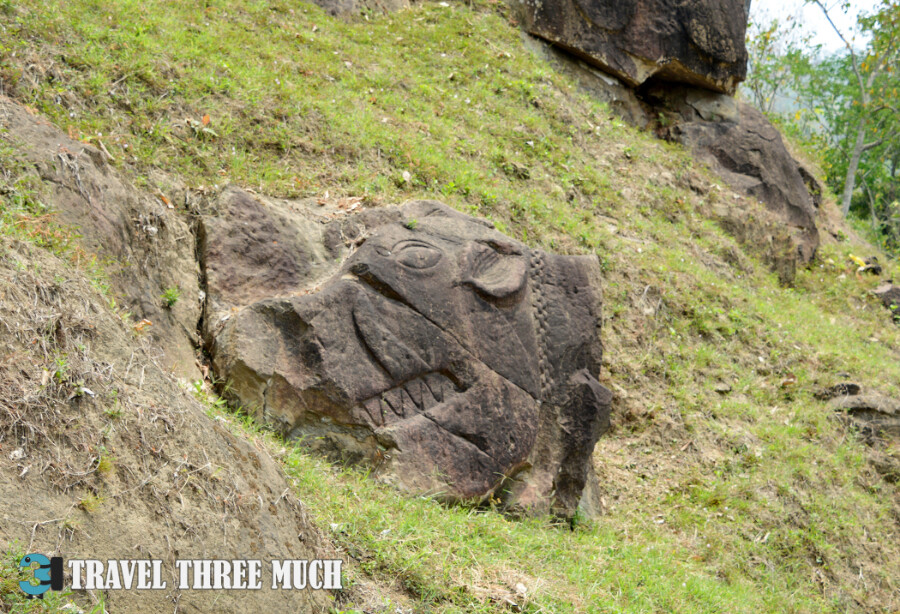
We caught our breaths for a few moments, took in the views, and trekked back to the parking lot for the trip back to Agartala, bidding the magnificent and serene Unakoti hills and its singing squirrels a fond adieu.
